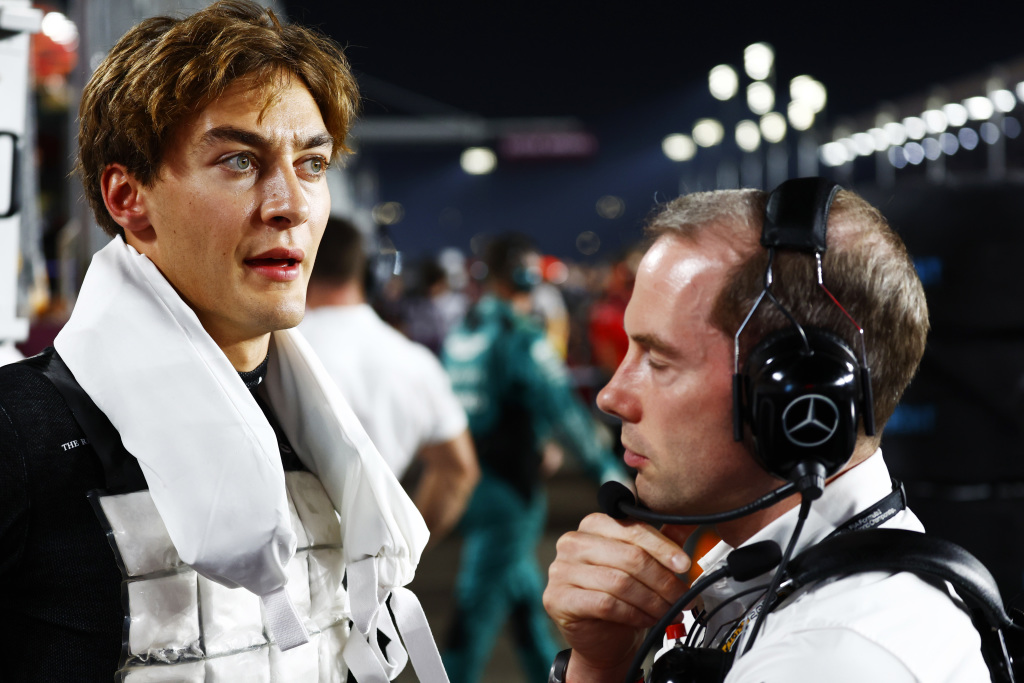Formula 1 drivers described the conditions at the Qatar Grand Prix as “beyond the limit for what was acceptable for driving” after multiple needed medical attention and were unwell due to the heat.
High temperatures and humidity combined with a high-speed physical circuit was added to by maximum stint lengths forcing at least three pit stops per driver. As a result, there was no tire saving going on as drivers had to push throughout each stint, with Logan Sargeant retiring after suffering from intense dehydration during the race.
Alex Albon also needed help after struggling to climb out of his car, and with many others complaining of heat exhaustion George Russell said the conditions proved to be unsafe.
“Today was beyond the limit for what was acceptable for driving,” Russell said. “If over 50 percent of the grid were saying they’re feeling sick, couldn’t drive, close to passing out — you don’t want to be passing out when you’re driving 200mph down the straights and that’s how I felt at times. Any hotter, I think I would’ve retired because my body was gonna give up.
“It was an absolutely brutal race. By far the most physical race I have ever experienced. I felt close to fainting in that race; I have never experienced anything like it before.”
Esteban Ocon revealed he had been physically sick even early in the race but had managed to find a way of making it to the finish.
“I was feeling ill,” Ocon said. “Lap 15, 16, I was throwing up for two laps inside the cockpit. And then I was like, ‘…That’s going to be a long race.’ I don’t know, I tried to calm down, I tried to remember that the mental side in sport is the strongest part of your body, and I managed to get that under control, and finish the race.
[lawrence-auto-related count=3 category=1388]
“But honestly, I was not expecting for the race to be that hard. I can normally do two race distances, even in Singapore. Physically, like muscle-wise and cardio-wise, I’m always fine. I don’t know, it was just like 80 degrees inside the cockpit this race.”
Charles Leclerc says drivers are likely to discuss the scenario they faced in Qatar, although next year’s race is scheduled for the end of November and likely lower temperatures.
“This is the toughest race I think for every driver in Formula 1 of our career,” Leclerc said. “For everybody — I don’t believe the one that says it’s not. I think there was many things adding up. Obviously the heat was extremely warm, we have a track with lots of high speed corners, but I think the most significant part is we had to do three stops and that meant no tire management in the high speed which meant qualifying lap after qualifying lap.
“I think maybe next year if we find ourselves in the same situation I think we’ll have to discuss between us drivers. We can always look at each other at the end of the race when we are sat down, and this time you could feel it was different and some drivers really felt really bad.
“This is something we’ll maybe have to discuss. At one point it’s not even a physical preparation, it’s just dehydration. It’s such a level that your vision is so much worse, your heart rate is going to the stars and it’s very difficult to control all of this, so it was really, really difficult.”
Valtteri Bottas added that drivers are being put in dangerous positions if they continue racing when their body temperature is rising so much.
“I would say it was harder than Singapore,” Bottas said. “Just because the temperature in the cockpit started to be almost too much. I think it’s getting to the limit and someone is going to have heat stroke.
“Obviously the feeling is like torture in the car… I’m not surprised [Sargeant retired]. Any hotter than this would be, I would say, not safe.”
